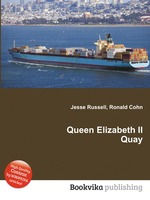Queen Elizabeth II Quay
Jesse Russell Ronald Cohn
бумажная книга
High Quality Content by WIKIPEDIA articles! Queen Elizabeth II Quay, also known as QE II Quay (Template:Pron-en) and by residents as the Deep Water Quay, is a locality in Freetown, Sierra Leone. It is located on a promontory called Fourah Point (also known as Farran Point, Farren Point, and Foura Point) on the southern bank of the estuary of the Sierra Leone River between Destruction Bay and Cline Bay within the suburb of Cline Town directly to the east of central Freetown. It is the larger of two harbors within Freetown, the other harbor known variously as Government Wharf, Freetown Port, or simply "the harbor" and is Freetown`s more centrally located harbor. Queen Elizabeth II Quay has sometimes been the called the third largest natural harbor in the world— this is inaccurate in two respects: 1.) the QE II Quay is not itself a natural harbor but a man-made port or "quay", and 2.) the Quay is a very small feature of the river estuary on which it was built— it is this estuary which has carved out what is the largest natural harbor on the African continent but still puts this harbor behind Port Jackson in Sydney, Australia, and several natural harbors claiming the title for world`s second largest, including Halifax Harbour in Nova Scotia, Poole Harbour in Dorset, southern England, and Cork Harbour in County Cork, Ireland. Although the government of Sierra Leone assumed management of the Quay in 1964, it decided to privatize the property in 2007, thus converting the port from a "service" port into a "land lord" port (in the service port model, the port authority and operator are one and the same; in a landlord port model, the port authority retains the port`s assets but leases them to private individuals or organizations; the two other models recognized by the World Bank are the tool port model where the port authority selectively leases certain port assets, and the private services model where the port authority and operator are entirely privately owned).


